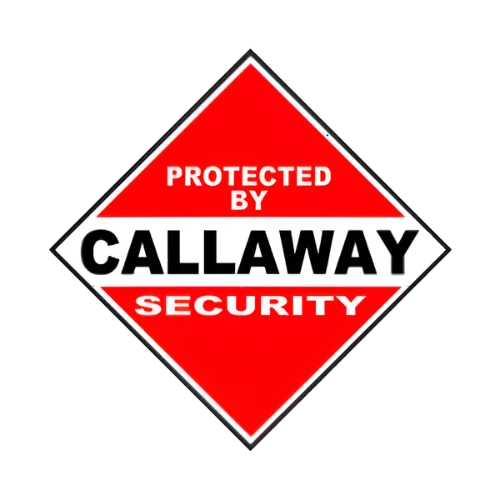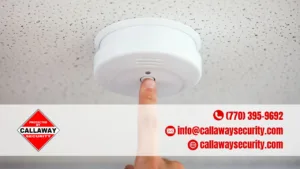A person’s home is their castle—it is a private sanctuary that provides comfort, safety, and security. As homeowners, we want to do everything we can to protect our homes and keep our families safe from intruders or other threats. Implementing some simple home security measures can go a long way in deterring criminals and giving us greater peace of mind. In this guide, we will walk through practical tips for safeguarding our homes through security systems, outdoor lighting, securing doors and windows, being vigilant neighbors, and developing safety plans.
Install a Security System
One of the most effective ways to secure our homes is by investing in a home security system. Security systems detect intrusions and alert us or authorities when there is unauthorized entry into the home. Many options exist for security systems, from affordable DIY kits to more advanced systems that are professionally installed and monitored. When selecting a system, we must consider factors like cost, level of monitoring, and integration with other smart home devices.
Outdoor security cameras provide an additional layer of protection and recording capability if an incident occurs. Positioning cameras to monitor driveways, doorways, and other exterior areas of the home allows us to keep an eye out for any nefarious activity. High-resolution cameras with night vision and motion detection provide 24/7 surveillance.
Another component of a security system is sensors on doors and windows that trigger alarms if an intruder attempts to gain entry into the home. Glass break sensors also alert us when windows are broken. Audible alarms, flashing lights, and notifications to our phones or monitoring centers activate when a sensor is tripped so we can take immediate action. By integrating sensors with cameras, the system captures video evidence if the alarm goes off due to an intrusion.
Light Up the Property Exterior
Outdoor lighting around the perimeter of our homes is an inexpensive way to deter prowlers from targeting our property while also enhancing safety if we come or go after dark. Illuminating driveways, pathways to entrances, porches, patios, and yards removes hiding spots for intruders and makes them feel exposed if they trespass on the property.
Bright motion sensor lights flip on automatically when activity is detected to startle lurkers. For ambient lighting, choose bulbs rated for outdoor use and install waterproof fixtures close to doors or along pathways. We can also mount floodlights high up on walls to cast broad light across yards. Timers create the illusion that we are home by automatically turning lights on in the evenings and off later at night. Together, lighting deters trespassers and assists us when entering or leaving our homes at night.
Secure All Entry Points
Though it may seem obvious, carefully locking all exterior doors and windows truly is one of the best measures we can take to prevent unauthorized access. Check that all external doors have sturdy, properly installed deadbolt locks. Many break-ins occur simply by intruders twisting doorknobs to open unlocked doors or forcing entry through weak locks. Solid doors with reinforced frames provide additional integrity. Sliding doors and windows also need locks to prevent them from being lifted open.
For doors and windows that open, sensors connected to the security system announce if an entry point unexpectedly opens. When leaving the house empty for extended periods, it is wise to double check that every window and exterior door stays locked. We can also install braces and dowels in sliding windows and doors when we leave to bar them from opening. Taking time to secure all possible entrances reduces opportunities for intruders to sneak in.
Watch Out for Neighbors Too
While focusing on security within our own homes is important, looking out for neighbors goes hand in hand with keeping the community safe. Getting to know neighbors allows us to be aware of who normally lives nearby and keeps an eye on the block. Exchanging contact info makes it easy to reach out about anything suspicious.
Maintaining awareness of unusual activity helps identify potential threats. If we spot unfamiliar vehicles lingering or unknown visitors next door when residents are away, a quick call or text prompts neighbors to verify whether the visit is authorized. Reporting concerning incidents to each other and the police builds collective vigilance.
Neighborhood watch groups formalize oversight of the community. Local residents join together to monitor and report questionable behavior. Some neighborhoods even have phone trees or communication apps to broadcast alerts about incidents or missing persons. Working collaboratively with neighbors adds layers of observation to catch illegal activity and prevent victimization.
Make a Family Safety Plan
While home security systems and practices aim to avert emergencies, it is also essential that families prepare evacuation plans in case a dangerous situation arises. Parents should devise escape routes with multiple exits from upper levels using ladders or permanent outdoor stairs. Also identifies a safe outdoor meeting spot like a specific neighbor’s house where the family regroups once evacuated.
Practice exit drills using different scenarios periodically so all residents understand the procedures. Prepare emergency supply kits with first aid necessities, flashlights, batteries, cash, copies of identification, and changes of clothing to facilitate rapid departure. For homes with young children, remind them to dial 911 in case of scary events when adults are incapacitated or absent.
Hopefully, emergency action plans remain unused. But fire, flooding, earthquakes and other threats could suddenly make evacuation essential. By plotting exit strategies ahead of time, families react more calmly and efficiently, boosting chances for a positive outcome.
Integrated Approaches for Maximum Safety
An adaptive, multi-tiered security strategy creates the best odds of preventing home emergencies. Combining strong locks, alarm systems, ample lighting, community vigilance, training in emergency protocols and other proactive measures hardens the building’s protective shell while also preparing residents.
Conclusion
No single product or action makes a home impenetrable. Rather than depending on one safeguard, implementing mutually supportive security layers ensures coverage if a criminal circumvents one element. Just remember, home defense is an ongoing effort requiring regular reassessment as conditions evolve, novel products launch and fresh weaknesses materialize. Maintaining comprehensive protection against ever-adaptive threats helps us rest easy at night knowing danger lurks outside while our families slumber safely within our guarded walls.
Contact Callaway Security™ for home security systems installation!












